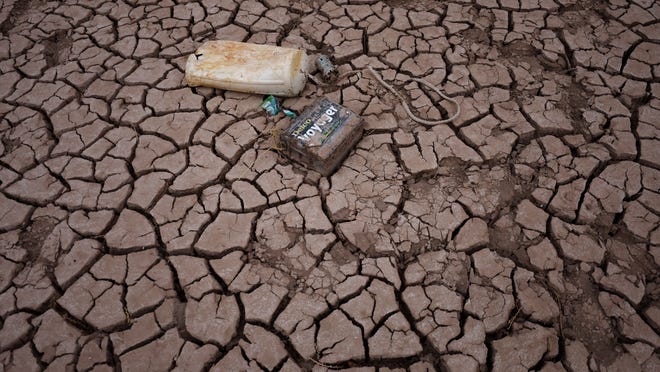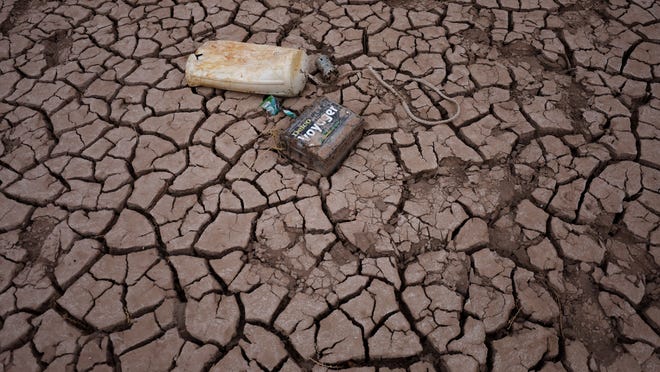More human remains were discovered on the edge of Lake Mead, marking the fourth such find since May as the lake’s shoreline recedes from drought.
Rangers received a call Saturday morning reporting “human skeletal remains” at Swim Beach in Lake Mead’s Boulder Basin, according to the National Park Service. Authorities set a perimeter around the remains and retrieved them with assistance from a Las Vegas Metropolitan Police dive team.
The Clark County Medical Examiner’s Office is attempting to determine when and how the person died as investigators review missing persons records.
A BODY IN A BARREL, GHOST TOWNS, A CRASHED B-29:What other secrets are buried in Lake Mead?
Multiple sets of human remains, dozens of sunken boats, trash and baby strollers have been found on the edge of the lake this summer as water levels sit at their lowest since the reservoir was first filled.
On May 1, a barrel containing human remains that police said was probably dumped in the 1970s or 1980s was found near Hemenway Harbor, and more remains were discovered on the shoreline by paddleboarders a week later. Partial human remains were found in the Boulder Beach area July 25.
Police suggested that more remains and other items may be found as the water level recedes.
VIEW FROM ABOVE:NASA satellite images show Lake Mead water levels plummeting to lowest point since 1937
Lake Mead, the nation’s largest built reservoir surface, has dropped more than 170 feet since the reservoir was full in 1983 because of drought and heavy water usage by nearby states. The lake was created by blocking the Colorado River with the Hoover Dam, and though it has been full several times, its water level has receded for years.
Large swaths of the West are experiencing moderate to exceptional drought, including California, Nevada, Utah, Arizona and New Mexico, according to data from the National Drought Mitigation Center.
Scientists have warned that drought intensification is a result of global warming, mainly from rising levels of carbon dioxide and other greenhouse gases in the atmosphere.
The US House of Representatives passed the Wildfire Response and Drought Resilience Act last month, which would authorize funding for drought relief efforts on the Colorado River.
Contributing: Trevor Hughes, USA TODAY; Associated Press

